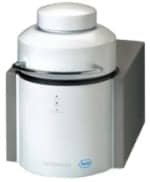Clinical and Laboratory Standards Institute (CLSI), Wayne, Pa, has published M54-A-Principles and Procedures for Detection of Fungi in Clinical Specimens-Direct Examination and Culture; Approved Guideline.
The new document addresses the protocols for detecting fungi in clinical specimens and highlights direct microscopic examinations and fungal culturing methods.
Direct examinations equip laboratory scientists with a substantial amount of information, in a rapid fashion, on possible pathogens. In addition to this prime focus, M54’s guidance on fungal media includes application, selections, inoculation, incubation, and schedules for reading. Unique safety risks are also discussed, and guidance on the performance of a risk assessment is included. The document also focuses on the facilities needed for fungal culturing and other relevant safety considerations, such as proper staff training and education. Guidance is provided regarding when to refer samples to a more experienced laboratory, as is a discussion on unique biosafety and mycology laboratory quality control processes.
M54 includes photographs to help laboratorians interpret the direct examinations. “The inclusion of wonderful photographs that guide the reader in performance and interpretation of the direct examinations is just one of the highlights of this document,” said M54 Chairholder Nancy L. Wengenack, PhD, D(ABMM), FIDSA, Mayo Clinic, Rochester, Minn. “The appendixes are also quite useful and provide more in-depth information about fluorescence microscopy, histopathological stains for fungi, and the control of mites in fungal cultures.”
This document is intended for laboratory scientists who process specimens for fungal culture and/or perform fungal direct microscopic examinations. “Anyone who performs mycology staining and culturing will find the document useful because it tells them how to do the up-front processing steps that are often overlooked in other publications on mycology, which generally focus on the question, ‘How do I identify this fungus?'” Dr. Wengenack explained. “This document does not tell the reader how to identify the fungus, but it does inform the reader about how to collect a good specimen, how to do a direct microscopic examination of the specimen, and how to inoculate the appropriate culture plates so that the fungus can be grown in culture for identification and antifungal susceptibility testing, if needed.”
CLSI will host a Webinar on January 30, 2013 from 1pm to 2 pm ET on CLSI document M54. The Webinar will be presented by Dr. Wengenack and will provide greater detail about how to use and implement the document. More information can be found by visiting CLSI’s Web site and selecting “CLSI Webinars” under the “Education” tab.
[Source: CLSI]


